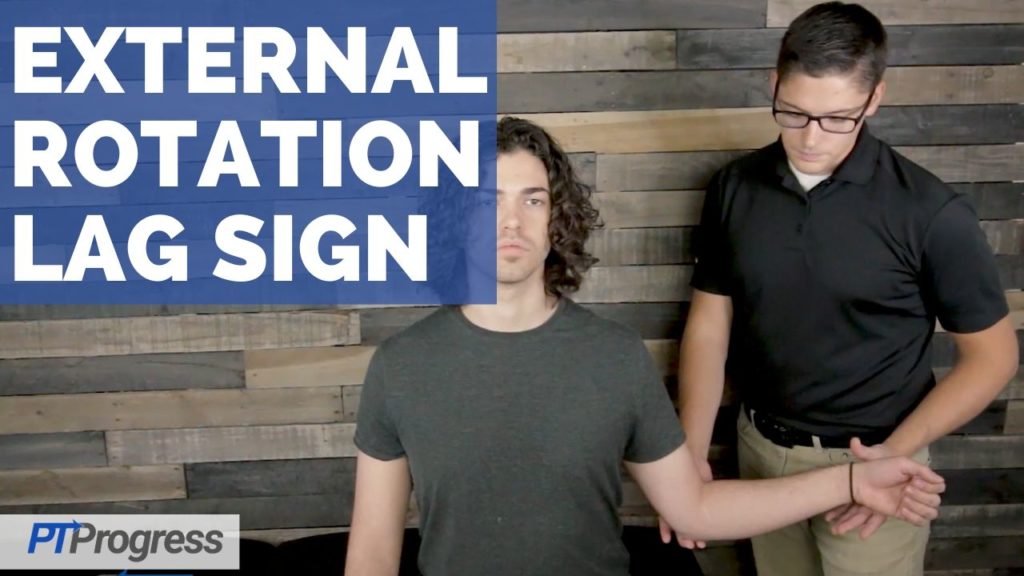
The External Rotation Lag Sign is used to identify supraspinatus or infraspinatus tears. Specifically, this test is helpful in identifying the presence of full thickness tears.
How to Perform External Rotation Lag Sign Test
Position of Patient: The patient is sitting with arm relaxed at side.
Performance: The examiner will passively flex the patient’s elbow to 90 degrees and externally rotate the arm to 5 degrees from end range. Supporting the patient at the elbow, release the patient’s wrist, instructing them to hold this position.
How to Interpret External Rotation Lag Sign Test
Positive Finding: The test is considered positive if the patient is unable to hold the position into external rotation. The patient’s arm will rotate internally as they are unable to maintain the externally rotated position.
Test Accuracy / Reliability / Evidence:
External Rotation Lag Sign test Sensitivity and Specificity
Sensitivity = 0.46
Specificity = 0.94
+LR = 1.7
– LR = 0.60
Source: Miller CA, Forrester GA, and Lewis JS: The validity of the lag signs in diagnosing full-thickness tears of the rotator cuff: a preliminary investigation. Arch Phys Med Rehabil 2008; 89: pp. 1162-1168
External Rotation Lag Sign Video
The External Rotation Lag Sign test is used to identify supraspinatus or infraspinatus tears, specifically, full thickness tears.
To perform the external rotation lag sign test, the patient should be positioned in sitting with arm relaxed at their side.
The examiner will passively flex the patient’s elbow to 90 degrees and externally rotate the arm to 5 degrees from end range. While supporting the patient’s arm at the elbow, release the patient’s wrist, instructing them to hold this position of external rotation.
The test is considered positive if the patient is unable to hold this position into external rotation. A positive external rotation lag sign occurs if the patient’s arm rotates internally as they are unable to maintain the externally rotated position
Click here to view more special tests of the shoulder.

